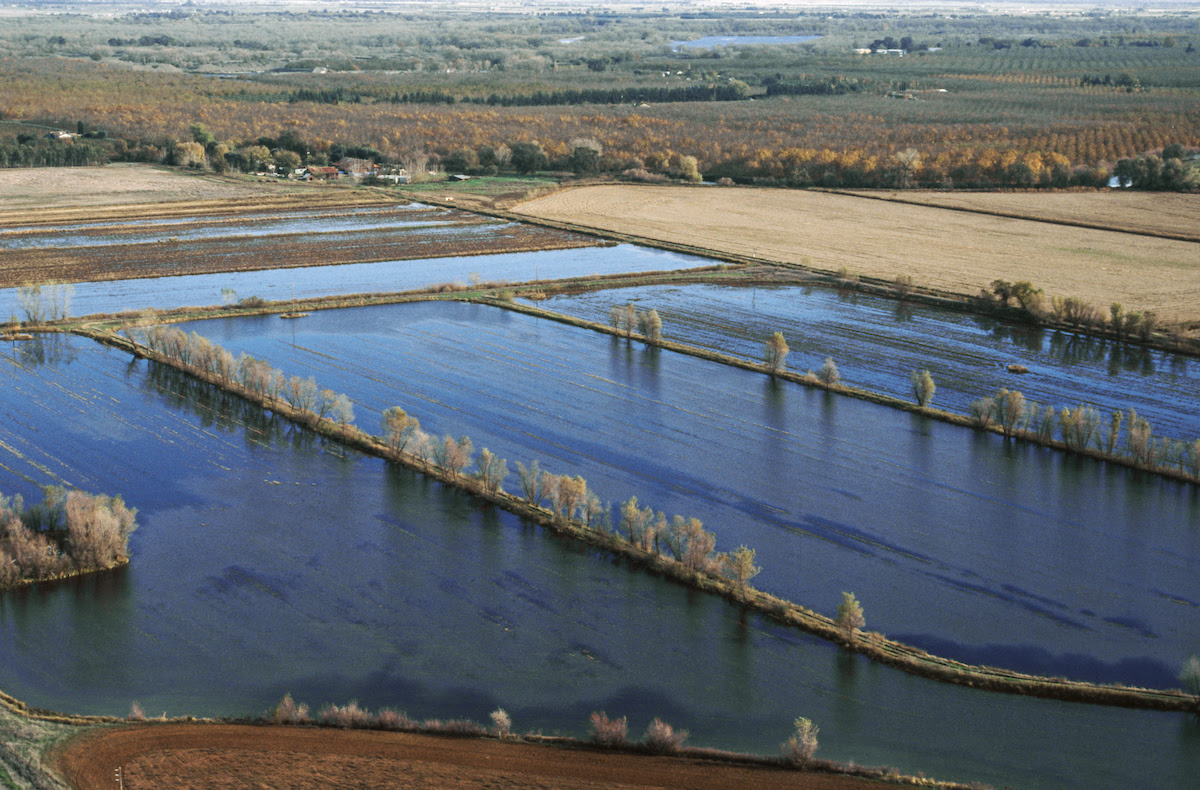
State agencies fast-track groundwater recharge pilot project to capture flood waters for underground storage
India Post News Service
SACRAMENTO, CALIF: The Department of Water Resources (DWR) is partnering with the State Water Resources Control Board to fast-track efforts to capture floodwaters to recharge groundwater basins. Water captured during extreme wet periods such as the one California is now experiencing will be stored in groundwater basins for use during dry periods.
Governor Newsom’s “California Water Supply Strategy, Adapting to a Hotter, Drier Future” calls on DWR and the State Water Board to work with local agencies to significantly expand the State’s ability to capture water from winter storms and adapt to more extreme weather patterns caused by climate change. DWR and the board are working together to expedite the regulatory steps necessary to store significant rainfall and excess water underground, while still ensuring protections for the environment and other water users as required in State law.
“The State is capturing more water supply by accelerating groundwater recharge permitting and projects that mitigate the impacts of prolonged drought and support long-term sustainable groundwater management,” said DWR Director Karla Nemeth. “Projects that capture available precipitation, storm water, or floodwaters to recharge depleted groundwater basins need to be ready to capture high flows when they are available during each wet season, typically October through April in California.”
The State’s efforts reached a milestone January 6 when the State Water Board approved a six-month permit that will enable multiple landowners to divert excess flows from Mariposa creek near the City of Merced to recharge a key groundwater basin. The Merced Project permit, the first approved under a new pilot regulatory assistance program, is expected to pave the way for future projects to allow water from wet-weather storms to be captured and diverted. The permit will cover multiple diversions by multiple landowners in a coordinated fashion managed by a groundwater sustainability agency.
The pilot program began in August 2022 with an application from the Merced Irrigation District and the Merced Irrigation-Urban Groundwater Sustainability Agency to divert and store water from the Mariposa creek. The permit application authorizes diversion of up to 10,000 acre-feet of water from the creek during periods of high flows that would otherwise likely flow through the system. The Merced Subbasin is one of 21 basins in the state of California identified as Critically Overdrafted by DWR.
“The review process for these permits is complex and must consider impacts to the environment and existing water rights, including those dependent on specific Delta conditions and state and federal water project requirements,” said State Water Board Chair Joaquin Esquivel. “In acknowledgement of this complexity, we have streamlined the process so we issue them in a timely way and help local agencies succeed in capturing storm water for recharge and bringing stressed groundwater basins into balance.”
Since 2016, the State Water Board has approved 20 temporary permits. Currently there are five applications pending, with two more projected to be approved next week. The remaining three are going through a public noticing process.
The Merced Project’s permit includes multiple points of diversion. Diversions will be directed to a number of agricultural fields to support groundwater recharge consistent with the Merced Subbasin Groundwater Sustainability Plan. Water diverted for recharge purposes will be applied to working agricultural lands only, and water stored will be accounted for in the upcoming growing season as the first irrigation water to be pumped from the aquifers.
“Merced Irrigation District is excited to partner with DWR supporting GSAs with this crucial pilot project intended to help groundwater basins become sustainable by turning potential flood waters into groundwater recharge opportunities,” said Hicham Eltal, Deputy General Manager, Merced Irrigation District. “The project is intended to show that the subsidence being experienced in part of the Merced Groundwater Basin along the San Joaquin River can be addressed while simultaneously reducing recurring flood events from local creeks tributary to the San Joaquin River. The goal is that this effort paves the way for acquiring temporary permits to divert flood flows by GSAs throughout the State to help groundwater basins reach sustainability.”
As part of the Newsom’s Administration water supply strategy, the State is looking to expand groundwater recharge by at least 500,000 acre-feet in potential capacity. By expediting groundwater recharge projects, the State can help local agencies prepare now to take advantage of future heavy precipitation events. Early pilot project efforts, like the Merced Project, will demonstrate the feasibility of capturing available high flows for groundwater recharge while minimizing flood risks, and provide insight to support further streamlining of this process.
Groundwater basins serve as the state’s water savings account and are intended to provide a reliable water source when we have less rain and snowmelt. As weather patterns have become more variable and extreme from the effects of climate change, resulting in more frequent and consequential droughts and high flow events, replenishment of depleted groundwater basins is an essential part of California’s long-term water resilience and drought mitigation efforts. Significant expansion of groundwater recharge projects such as the Merced Project will be required to support the environment, agricultural uses, and ability to withstand future droughts.






